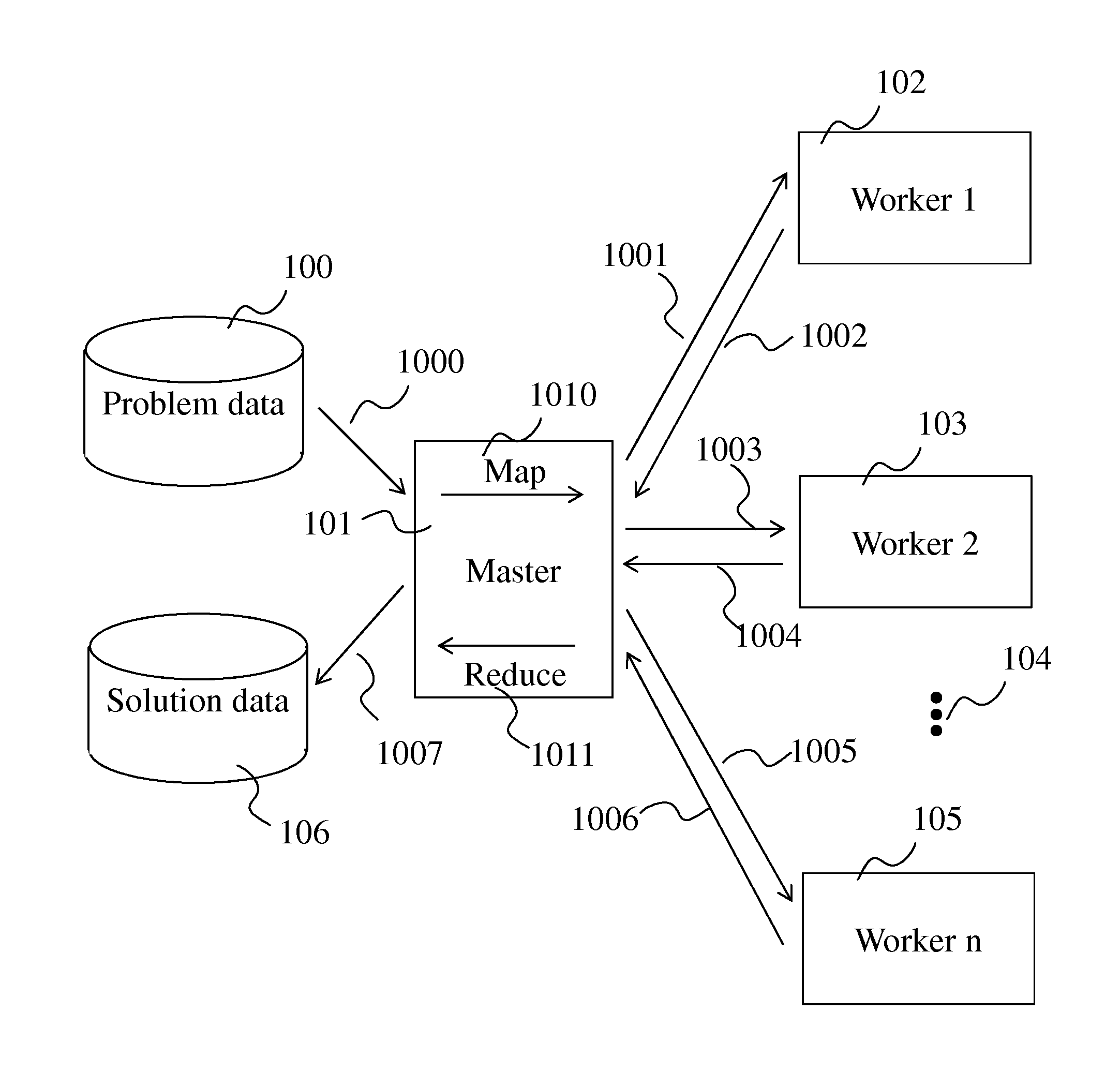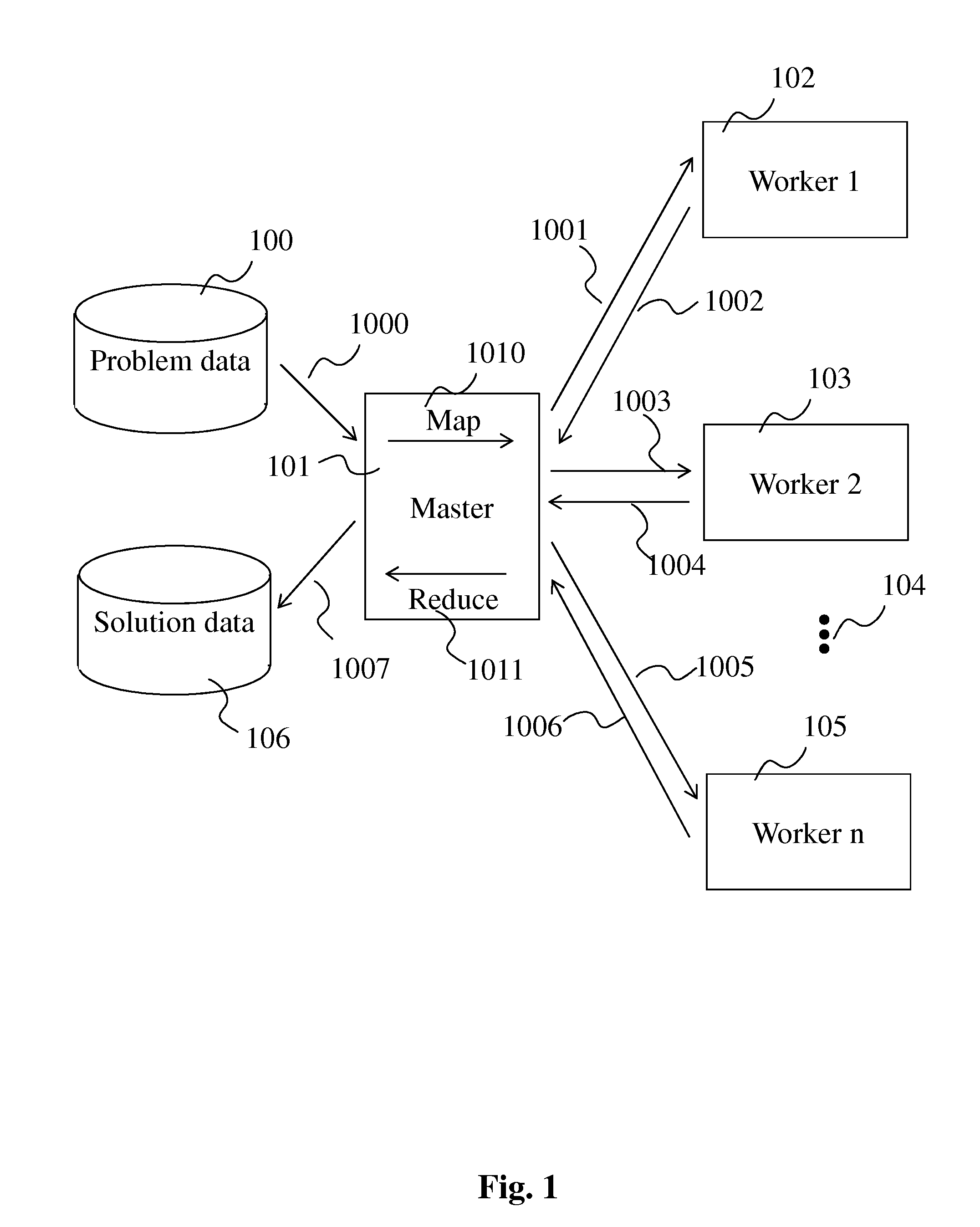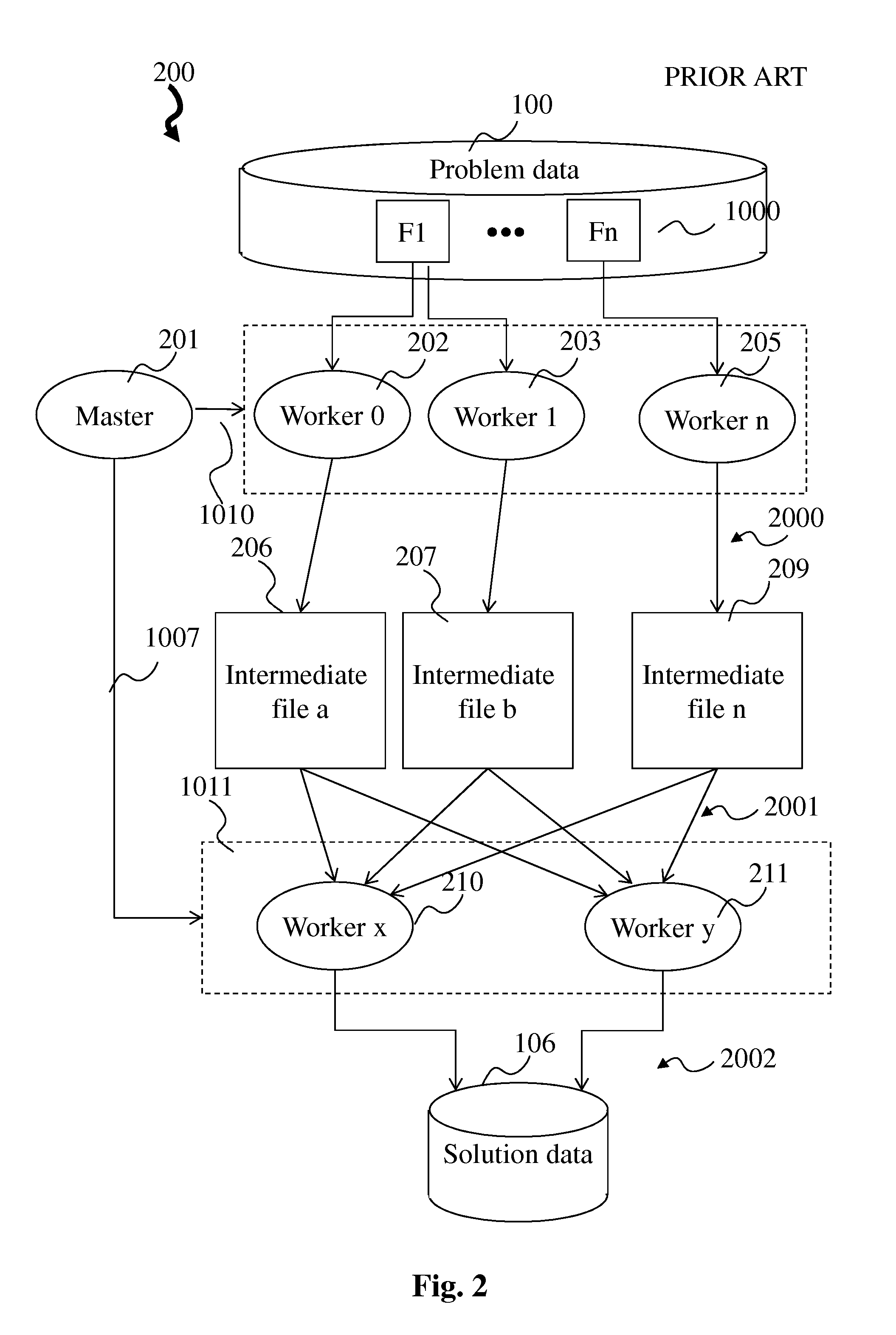DEVICE AND METHOD FOR OPTIMIZATION OF DATA PROCESSING IN A MapReduce FRAMEWORK
a data processing and mapreduce technology, applied in the field of data processing in a mapreduce framework, can solve the problems of stealing work between dependent tasks, requiring more computational power, and not being able to cope with task heterogeneity
- Summary
- Abstract
- Description
- Claims
- Application Information
AI Technical Summary
Benefits of technology
Problems solved by technology
Method used
Image
Examples
Embodiment Construction
[0038]FIG. 1 is a block diagram showing the principles of a prior art MapReduce method (source: Wikipedia).
[0039]A “master” node 101 takes (via arrow 1000) input data (“problem data”) 100, and in a “map” step 1010, divides it into smaller sub-problems, that are distributed over “worker” nodes 102 to 105 (arrows 1001,1003, 1005). The worker nodes process the smaller problem (arrows 1002, 1004, 1006) and notify the master node of task completion. In a “reduce” step 1011, the master node assigns a “reduce” operation to some worker nodes, which collect the answers to all the sub-problems and combine them in some way to form the output (“solution data”) 106 (via arrow 1007).
[0040]FIG. 2 is a block diagram of a prior art large-scale data processing system according to the MapReduce paradigm. The elements that are in common with FIG. 1 have already been explained for that figure and are not explained again here. A master process 201 splits problem data 100, stored in files F1 to Fn (1000) ...
PUM
 Login to View More
Login to View More Abstract
Description
Claims
Application Information
 Login to View More
Login to View More - R&D
- Intellectual Property
- Life Sciences
- Materials
- Tech Scout
- Unparalleled Data Quality
- Higher Quality Content
- 60% Fewer Hallucinations
Browse by: Latest US Patents, China's latest patents, Technical Efficacy Thesaurus, Application Domain, Technology Topic, Popular Technical Reports.
© 2025 PatSnap. All rights reserved.Legal|Privacy policy|Modern Slavery Act Transparency Statement|Sitemap|About US| Contact US: help@patsnap.com



